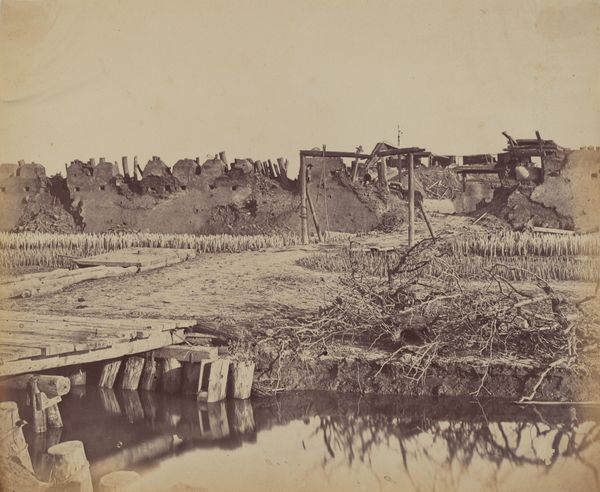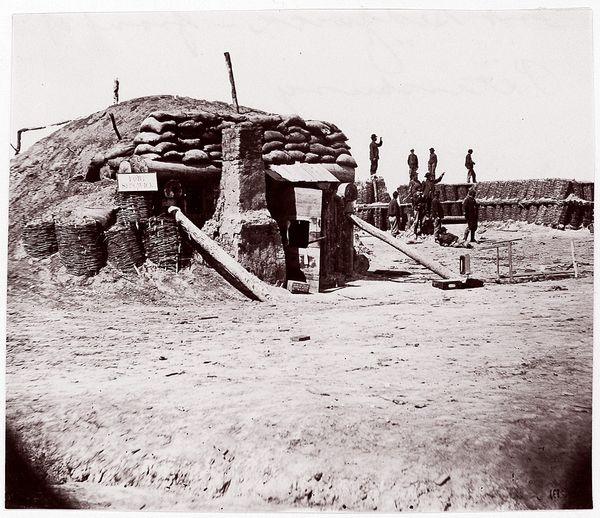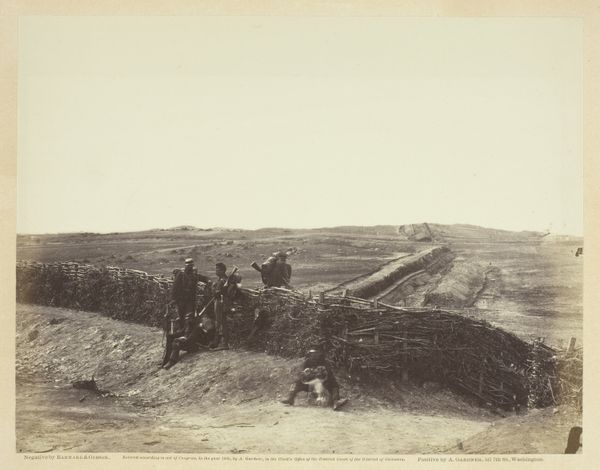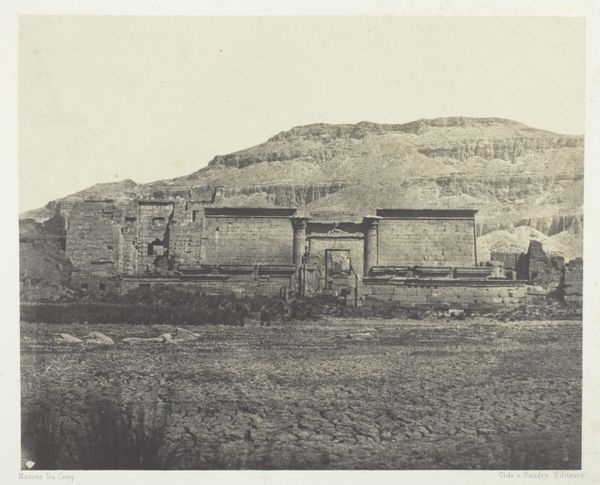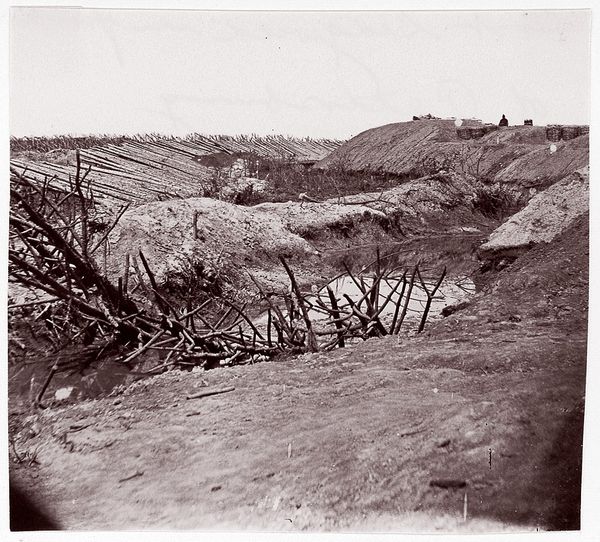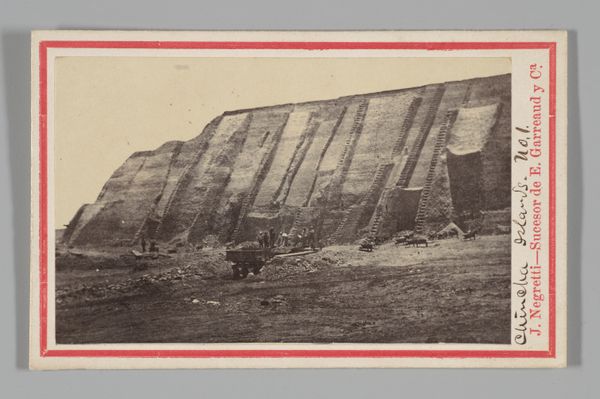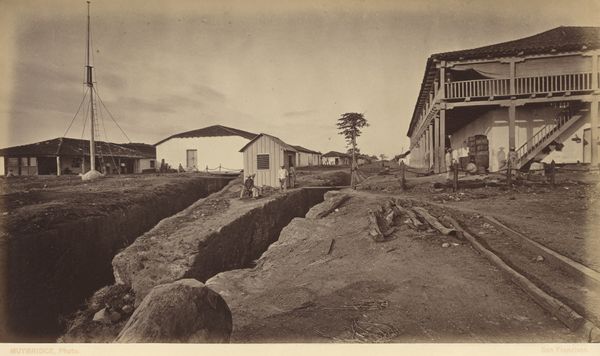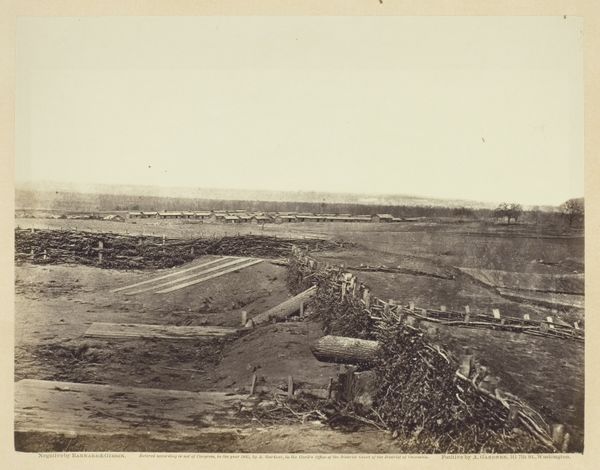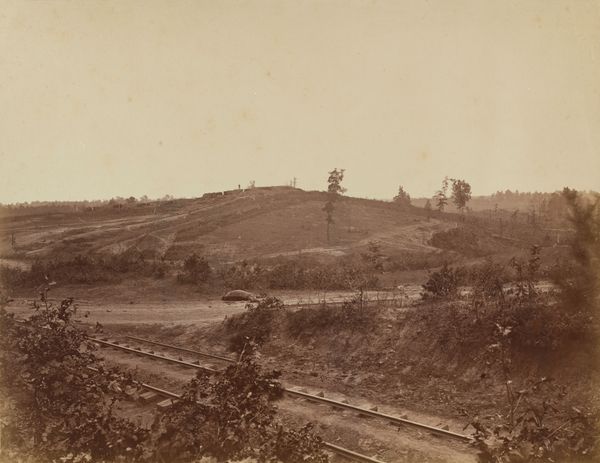
Angle of North Taku Fort at Which the French Entered, August 21, 1860 1860
0:00
0:00
photography, albumen-print
#
16_19th-century
#
landscape
#
photography
#
orientalism
#
history-painting
#
albumen-print
Dimensions: image: 24.3 × 29.2 cm (9 9/16 × 11 1/2 in.) mount: 25 × 31.4 cm (9 13/16 × 12 3/8 in.)
Copyright: National Gallery of Art: CC0 1.0
Curator: Here we have Felice Beato's albumen print from 1860, titled "Angle of North Taku Fort at Which the French Entered, August 21, 1860." Editor: It’s strikingly bleak, isn't it? The monochrome and ravaged structure create a palpable sense of ruin. I’m immediately struck by the texture of the earth, the rough, churned ground juxtaposed with what’s left of that wooden barricade. Curator: Indeed. Consider Beato's role here, documenting a pivotal moment during the Second Opium War. This isn’t just a photograph, it’s visual evidence of imperial incursion. Note how the breach in the fort looms—it is an architectural void that acts as a signifier for lost power, an orientalist visual trope of a crumbling 'other.' Editor: The ladders intrigue me, though. Their presence highlights the method of entry, but on another level, I wonder if they inadvertently represent ascent, not just literally into the fort, but metaphorically for the ascendant imperial force. Is there perhaps some suggestion of the Jacob's Ladder myth here, a promise of dominion? Curator: A keen observation. Consider also how the image obscures individual actors. The labor is rendered anonymous, almost abstract in its depiction. We don’t see the faces of those who breached the fort, or the defenders. The human element is secondary to the impact on the fort's material structure. Beato captures war as a physical act of destruction, altering landscapes and geopolitical structures. Editor: The pointed palisade hints at previous efforts for self defense that now lie tattered in defeat. Those defenses intended to protect from unseen invaders, are now themselves invaded and rendered useless. A common enough war trope, yes, but its potency is ever-present in its iconographic symbolism. Curator: Precisely. It highlights the futility of these built defenses against the machinery of war, rendering any attempt to other or prevent progress, hopeless. Editor: It does make me reflect upon the power of visual symbols to both celebrate victory and mark loss—how easily they become imprinted upon cultural memory. Curator: For me, it reinforces how art can unveil the social processes involved in historical events and material transformations, highlighting the power dynamics and their effects. Editor: And for me, the image remains a powerful testament to the enduring weight of conquest and its iconographic repercussions, centuries after.
Comments
No comments
Be the first to comment and join the conversation on the ultimate creative platform.
